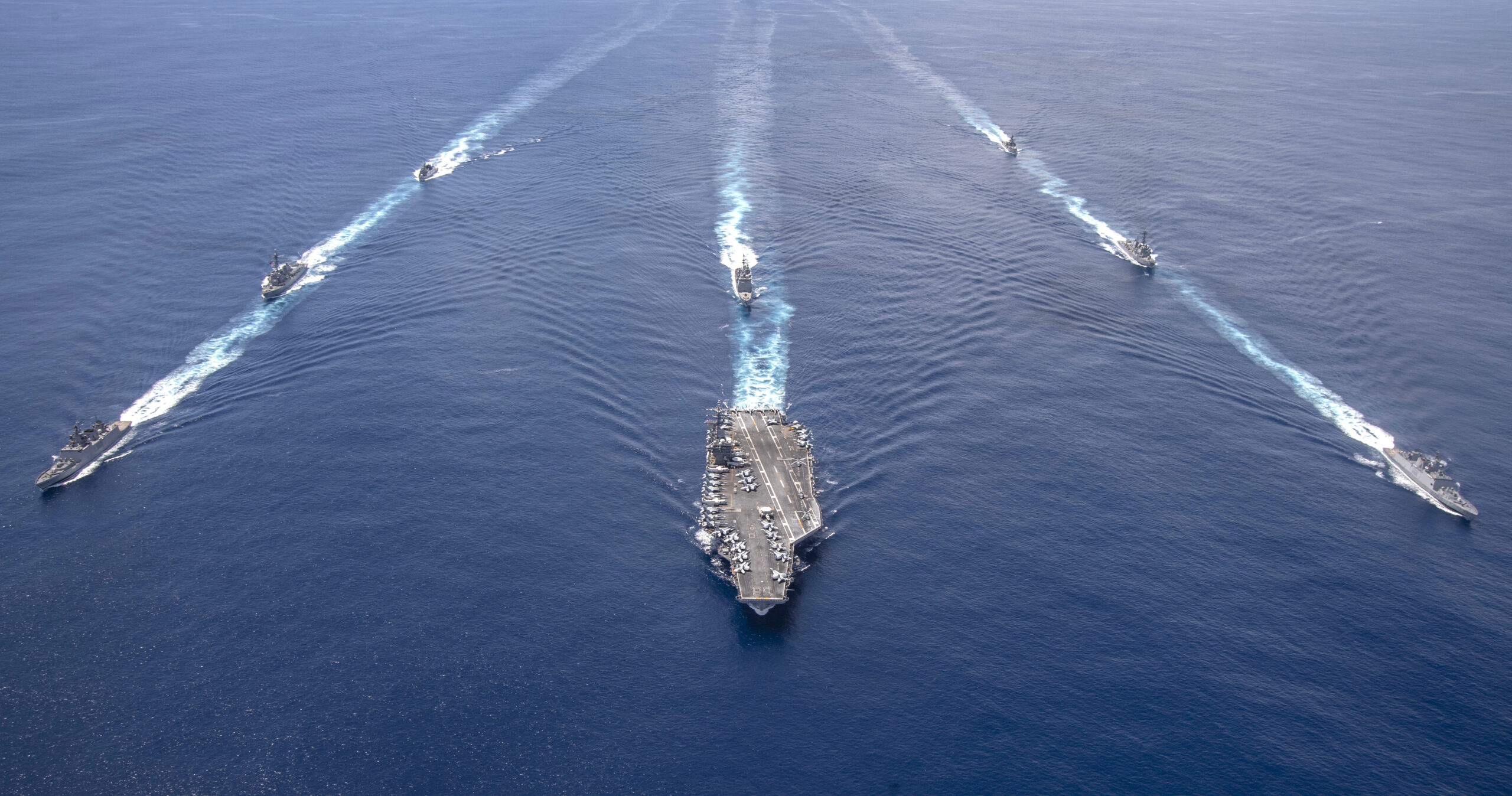As the Dragon continues to breathe fire on its neighbors and the South China Sea, global politics has seen major shifts.
The US defense website confirms the Indo-American Naval passex in the Indian Ocean. America’s Nimitz sailed through the South China Sea to the Indian Ocean. Currently, it is the world’s largest aircraft carrier. Indian Navy’s Eastern Naval Command welcomed the US carrier to the Bay of Bengal. The passing exercise (Indo-US PASSEX) symbolizes the close strategic partnership between the two nations.
The Passex
The Nimitz Carrier Strike Group, consisting of flagship USS Nimitz (CVN 68), Ticonderoga-class guided-missile cruiser USS Princeton (CG 59) and Arleigh Burke-class guided-missile destroyers USS Sterett (DDG 104) and USS Ralph Johnson (DDG 114), participated in cooperative exercises with the Indian Navy in the Indian Ocean commencing July 20.
“It was a privilege to operate with the Indian Navy,” Rear Adm. Jim Kirk, commander, Nimitz Carrier Strike Group. “RADM Vatsayan, Flag Officer Commanding Eastern Fleet, leads a powerful and highly skilled Fleet. The opportunity to have the Nimitz Carrier Strike Group join with his Fleet for a series of exercises improved our interoperability and is a testimony to the flexibility of both our Navies.”
While operating together, the U.S. and Indian naval forces conducted high-end exercises designed to maximize training and interoperability, including air defense. Nimitz CSG’s operations are designed to provide security throughout the region, while building partnerships with friends and allies.
Naval engagements such as these (Indo-US passex) exercises improve cooperation of U.S. and Indian maritime forces and contribute to both sides’ ability to counter threats at sea, from piracy to violent extremism. These engagements also present opportunities to build upon the pre-existing strong relationship between the United States and India and allow both countries to learn from each other. Nimitz Carrier Strike Group is currently deployed to the Indian Ocean, in support of a free and open Indo-Pacific.
China’s Salami Slicing tactics
The term was first coined in the 1940s, by Hungarian communist politician Matyas Rakosi. He described strategy for non-Communist parties — by “cutting them off like slices of salami.” Salami slicing is also known as ‘cabbage strategy’. In terms of Defence and diplomacy, Salami-Slicing is described as a strategy: that involves the divide and conquer process of threats and alliances to overcome opposition and acquire new territories.
Salami slicing is a tactic used by China for territorial expansion. Aksai Chin, Doklam and Galwan Valley are a few examples of times when China has tried to claim ownership over Indian territory.
After the Sino-India Galwan Valley skirmish at the Line of Actual control (LAC) on June 15, India has dramatically cut down on economic ties with China. The June 15 LAC faceoff is said to be the worst clash since 1975, as casualties were reported on both sides. India banned 59 Chinese apps including the sensational TikTok. A nationwide anti-China sentiment spread across India as hashtags like #HindiChiniByeBye, #BoycottChina etc were trending on Indian social media.
Moreover, Union Minister Nitin Gadkari announced: Modi government will not entertain investors in various sectors like Micro, Small and Medium Enterprises (MSMEs). Road Transport, Highways and MSME Minister Gadkari added that his ministry would not grant permission for joint ventures that have Chinese partners for road construction.
Indo-American economic ties the way forward?
During such a time as India is retracting its ties and projects from China, domestic production and the Make in India initiative see a green signal. There is a possibility of Indo-US economic ties strengthening further. There have been numerous bilateral agreements between India and the U.S. Recently both powers discussed the possibility of a free trade pact. India’s Commerce and Industry Minister Piyush Goyal and U.S. Commerce Secretary Wilbur Ross had a telephonic conversation.
“The two leaders also conversed on the ongoing India-USA trade discussions and appreciated the substantial progress made by both sides on most of the outstanding issues,” an official statement read.
By Kunjan Ahluwalia

